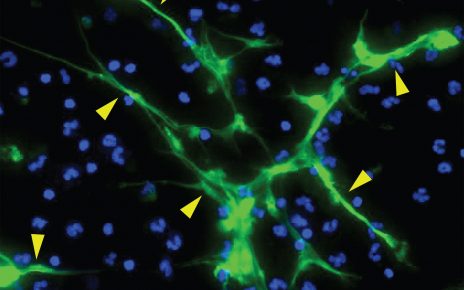The rapid spread of COVID-19 in early 2020 caught many governments unaware and forced them to move rapidly into a crude form of lockdown to curb the spread of the virus, with little time to consider the merits of variants on these basic lockdown strategies. The major concern now, as we “open up” and emerge from lockdowns, is the possible triggering of secondary COVID-19 waves or “infection spikes.” Such waves are potentially even more devasting than the first wave, since the great majority of the world’s population still remain susceptible to COVID-19, and due to the fact that many governments have already expended enormous economic resources in dealing with the societal, health, economic and other costs of the current lockdowns (it is widely agreed that these are not sustainable in the long run).
As countries now restart their economies, a major issue is whether it is possible to design new lockdown strategies in a manner that manages the virus and, at the same time, allows significant economic activity. We refer to this as the “Science of Lockdowns,” an area in which very little is currently known, and a research effort we are currently pioneering.
One of the great difficulties in designing lockdown policies comes from the many sources of the uncertainty that surrounds the COVID-19 disease. These include: the time taken for an individual to become symptomatic; the time for an individual to becoming infectious; the time for an individual to recover; the infection pathways (aerosols, surfaces); the number of asymptomatic individuals in the population, and many other factors. A further source of uncertainty is dealing with the unknown transmission between groups in different geographic areas and/or different geographic groups. All of these uncertainties are exacerbated by the exponential rate of growth of the epidemic; together, uncertainty and exponential growth make the timing of lockdown, as well as the optimal timing of release from lockdown, very difficult to determine.
How can science help? One branch of engineering mathematics whose very foundation is dealing with the timing of interventions, subject to delays and uncertainty, is control theory. Many decades of research tell us that making decisions based on old and stale information is very difficult, especially in the face of an exponentially growing epidemic. In the case of COVID-19, death rates of patients carrying the virus, for example, give a picture of what happened at a point of infection several weeks ago, and do not give a clear current picture of the epidemic. Timing interventions based on such data is outright dangerous; intervene too late and the health system is overwhelmed, and tragedy ensues.
Remarkably, even though few scientists familiar with control theory would seriously consider using uncertain real time data naively to trigger lockdown interventions to manage COVID-19, many of the currently proposed plans to control secondary waves propose to do just this. Instead, control theory suggests that delays, uncertainties and exponential growth can be addressed by developing regular periodic intervention policies that are not overly dependent on real-time measured data. Following this principle, early results from our group, and by several leading groups worldwide, pave the way to a principled design of lockdown strategies based on fast but regular lockdown intervals alternating with periods where society works normally. This policy has the potential to be a method of viral suppression, while at the same time allowing continued (albeit reduced) economic activity.
This might, for example, be in the form of say a repeating 1/6 week, where one normal workday is followed by lockdown for the next six days. While simple, not all such strategies work as well as others, and the task of lockdown science is to find the ones that work best in supressing the virus, allow economic activity, and deal with uncertainties in a robust manner. Note that these strategies are not designed to eliminate the virus; rather, their objective is to realize policies that can be sustained over long periods of time, ensuring the virus remains at relatively low levels until a vaccine or treatment becomes available. And, more importantly, the these fast-intermittent exit strategies are robust with respect to uncertainty as lockdown periods are not triggered by measurements, but rather are driven by predictable periodic triggers in and out of lockdown.
At this point, the reader might question the wisdom of not somehow using the available data. This is a legitimate concern and data should be used—but carefully. Basing triggering policies on instantaneous data is dangerous precisely because the data is very uncertain, for all the reasons discussed. However, over longer periods, uncertain data can be averaged, revealing long-term trends, such as whether mean levels of infections are increasing or decreasing. In normal circumstances, using old information in situations where one must respond quickly, would not make sense. However, using averaged long-term data to adjust the lockdown policy is a good idea, since our switching policies will always abate the virus.
Some policies will of course be better than others. These can be found by carefully using the averaged data to adjust the specific number of workdays and lockdown days, at a very slow rate, to respond to both uncertainties in the measurements, and changes in the virus dynamics over time (for example moving from a 1/6 policy to a 2/5, and possibly back, basing on the data).
This strategy is very natural. A good analogy is driving a sports car for the first time. When we are new to the car, we accelerate by pushing the gas pedal carefully (on) and backing off quickly (off) as we anticipate danger. Over time, as we observe the vehicle and come to understand its behavior, we may refine our strategy so that the way we accelerate is much better (adjustment). Taming the COVID-19 uncertainties using periodic lockdowns is doing the same thing, but with the added complication that observations are significantly delayed, and by the fact that we are moving in a “car” that is traveling at ever increasing breakneck speed.
The research work discussed in this contribution is a collaboration between groups at Imperial College London, University of Pisa, University College Dublin, University of Glasgow, University of Trieste, Tel Aviv University, RMIT Melbourne, and was carried out by M. Bin, P. Cheung, E. Crisostomi, P. Ferraro, H. Lhachemi, R. Murray-Smith, C. Myant, T. Parisini, R. Shorten, S. Stein, and L. Stone.



